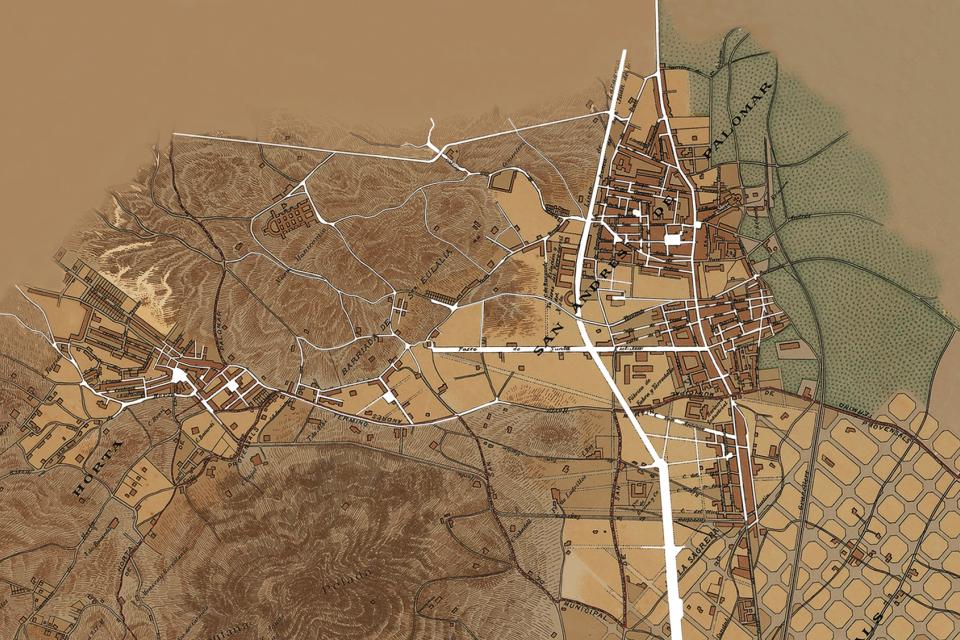Landscape Edges
Created by the Fabra i Coats Landscape Lab of the Master’s in Landscape Intervention and Heritage Management, UAB-MUHBA.
ESTHER FERRER, KSENIA BOKSBERG, ELETTRA PICCOROSSI, JUXHINA SPAHIU, MARIANNA TERZINI, GIANNI BALLONE, ALESSANDRO BALLOTTO, CAMILLA QUESADA PINNA, FRANCESCA ZINCHIRI, GABRIELA ZACCHI, FRANCESCO ZINCHIRI
The edges of the city have traditionally accommodated industrial activities. During the first decades of the 20th century, a city in frenzied expansion sprinkled its surrounding territory with factories like Fabra i Coats; working premises in a territory that was being ruthlessly urbanised. For a long time, these urban outskirts have remained isolated, unconnected, never really recognised, just like the work that was done inside the walls of the textile factories, where hands and machines wove the edges and borders with industrial precision. It is true that these landscape edges are no longer invisible but intertwined and woven with the city, thanks to various urban planning operations. The memory of this daily industrial life remains, although still frayed at the edges... threads of urban identity that hang, waiting for a common narrative to resew edge and city, memory and place, through the landscape.
The Fabra i Coats Landscape Lab proposes Landscape Edges, an exhibition that, based on these connections, reflects on the neighbourhoods to the east of Barcelona, like Sant Andreu. More specifically, it reconstructs the evolution of the urban fabric in a section of landscape between Turó de la Peira and the Besòs river, along Passeig de Sant Eulàlia (now called Passeig Fabra i Puig). This Passeig, planned in 1870, connected the council of the old town of Sant Andreu de Palomar with a promenade designed for the leisure pursuits of the locals, which reached all the way to the church of Santa Eulàlia, in the old neighbourhood of Vilapicina, from where a road began to Sant Iscle, in Collserola, leading to Horta.
This journey back in time then takes us to 20 April 1897, when a royal decree from the regent Maria Cristina annexed six old towns of the area to Barcelona, including Sant Andreu de Palomar and Horta. As of this moment, with new developable land available, growth in line with the streets was organised along new ones, which meshed and wove together with each other. The city grew rapidly, pulling the threads of the existing landscape and casting new nets over the cultivated fields – the cheap houses of Bon Pastor and Can Peguera. Gradually, the great Barcelona took shape, connecting nets that trapped large industrial fish. It is these large fish – the workshops of La Maquinista Terrestre i Marítima, the railway workshops El Norte, the thread factory Fabra i Coats, Hispano-Suiza... –, right alongside our Passeig, still tangled in the mesh, that define the character of this part of Barcelona and, ironically, also weave its contemporary future.
Marina Cervera and Francesc Muñoz

